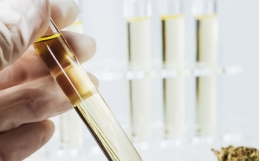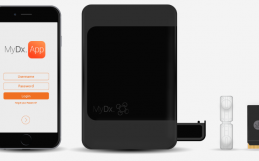Every year, nearly 18 percent of American adults consume cannabis in some form. If you consider yourself an avid cannabis user, then you are probably passionate about finding the best cannabis on the market. When buying cannabis from local shops, you can never be sure of how potent it is. You will also have a hard time determining the chemicals that were used on a cannabis plant during the growing process.
Instead of living your life in doubt, you need to find out more about the cannabis you consume. One of the best ways to do this is by using the testing products offered by MyDx. Are you curious about what the cannabis testing process involves or why this testing process is beneficial? If so, check out the useful information in this article.
Testing the Potency of Cannabis
Whether performing at-home testing or allowing a state-funded agency to test your cannabis, finding out about its potency is crucial. The state-funded agencies that test cannabis potency view the results of these tests as imperative. Accurate potency helps cannabis users figure out the right dosage, whether consuming cannabis flower or cannabis in edible form. The average potency test will assess how much THC and CBD a particular strain contains.
Generally, potency metrics are provided in three ways:
- A ratio of THC to CBD
- Cannabinoids per weight
- The amount of total cannabinoids present
Performing potency tests on the cannabis you buy from local dispensaries will help you assess how accurate the packing it was sold in was. This will also give you peace of mind that you are consuming a controlled amount of THC/CBD.
Checking For Contaminants
During cultivation and processing, cannabis might be exposed to a variety of different chemicals or contaminants. Pinpointing the type of contaminants on a cannabis product you’ve purchased is important. Cannabis contaminant screenings fall into three categories.
Heavy Metals and Physical Contaminants
Poor cultivation or packaging practices can result in physical contaminants like fecal matter, dust and dirt making its way into a cannabis product. Other contaminants like cadmium, lead and mercury can also contaminate cannabis. These contaminants are usually contained in the soil the cannabis is grown in.
Chemical Contaminants
Some cannabis farms use a variety of chemicals and pesticides during the cultivation of this crop. Some chemicals, like growth hormones, are very dangerous if consumed by humans. Most states where cannabis is legal have a detailed list of products and pesticides that are banned. The more you know about the chemicals banned by your state, the easier it will be to determine if a cannabis product is safe for consumption.
Microbial Contaminants
If things like mildew, mold or fungi show up during a cannabis test, then it is probably not safe for consumption. These microbial contaminants are very dangerous for people who have a compromised immune system. While this type of contamination can happen during the cultivation process, most microbial contaminants find their way into the product as it is being packaged.
As you can see, testing your cannabis can provide you with lots of useful information.






